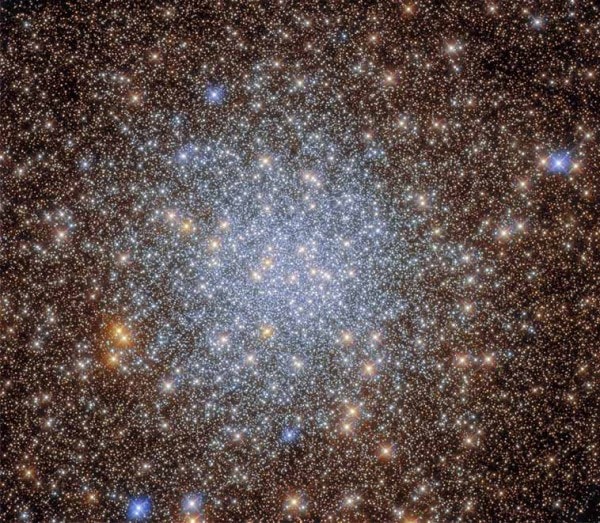[ad_1]
NASA has released a picture of a “globular cluster” that contains thousands of glittering stars. The Hubble Space Telescope used its Wide Field Camera 3 and Advanced Camera for Surveys to capture this image of the globular cluster NGC 6569 in the Sagitarrius constellation.
Globular clusters are stable and tightly bound clusters that contain tens of thousands to millions of stars. They are typically much larger than open clusters and are tightly gravitationally bound. The strong gravitational attraction between the closely packed stars gives them their regular spherical shape, hence the nomenclature “globular”.
They are usually populated by older, redder stars than are found in open clusters; redder stars in the latter might disperse before they become old. The gravitational attraction also makes them very stable which can lead to them becoming extremely long-lived, surviving to be billions of years old.
All kinds of star clusters are of great interest to astronomers because the constituent stars would have all formed at around the same time and location with similar internal compositions. Therefore, these stellar clusters offer useful insights into how stars form and evolve. But it is challenging to observe individual stars within globular clusters since they are so densely packed.
This new image comes from an investigation of globular clusters which lie close to the centre of our Milky Way galaxy. Such objects were avoided in previous surveys because the dusty centre of our galaxy blocks their light and alters the colours of the stars within them. A star’s colour is particularly important to astronomers as it can give insights into their ages, compositions and temperatures.
 The constituent stars would have all formed at around the same time and location with similar internal compositions. (Image credit: ESA/Hubble & NASA, R. Cohen)
The constituent stars would have all formed at around the same time and location with similar internal compositions. (Image credit: ESA/Hubble & NASA, R. Cohen)
The scientists who proposed these new observations combined data from Hubble with data from astronomical archives, which allowed them to measure the ages of globular clusters like NGC 6569. Their research also helped give insights into the structure and density of globular clusters towards the centre of the Milky Way.
!function(f,b,e,v,n,t,s)
{if(f.fbq)return;n=f.fbq=function(){n.callMethod?
n.callMethod.apply(n,arguments):n.queue.push(arguments)};
if(!f._fbq)f._fbq=n;n.push=n;n.loaded=!0;n.version=’2.0′;
n.queue=[];t=b.createElement(e);t.async=!0;
t.src=v;s=b.getElementsByTagName(e)[0];
s.parentNode.insertBefore(t,s)}(window, document,’script’,
‘https://connect.facebook.net/en_US/fbevents.js’);
fbq(‘init’, ‘444470064056909’);
fbq(‘track’, ‘PageView’);
[ad_2]
Source link


